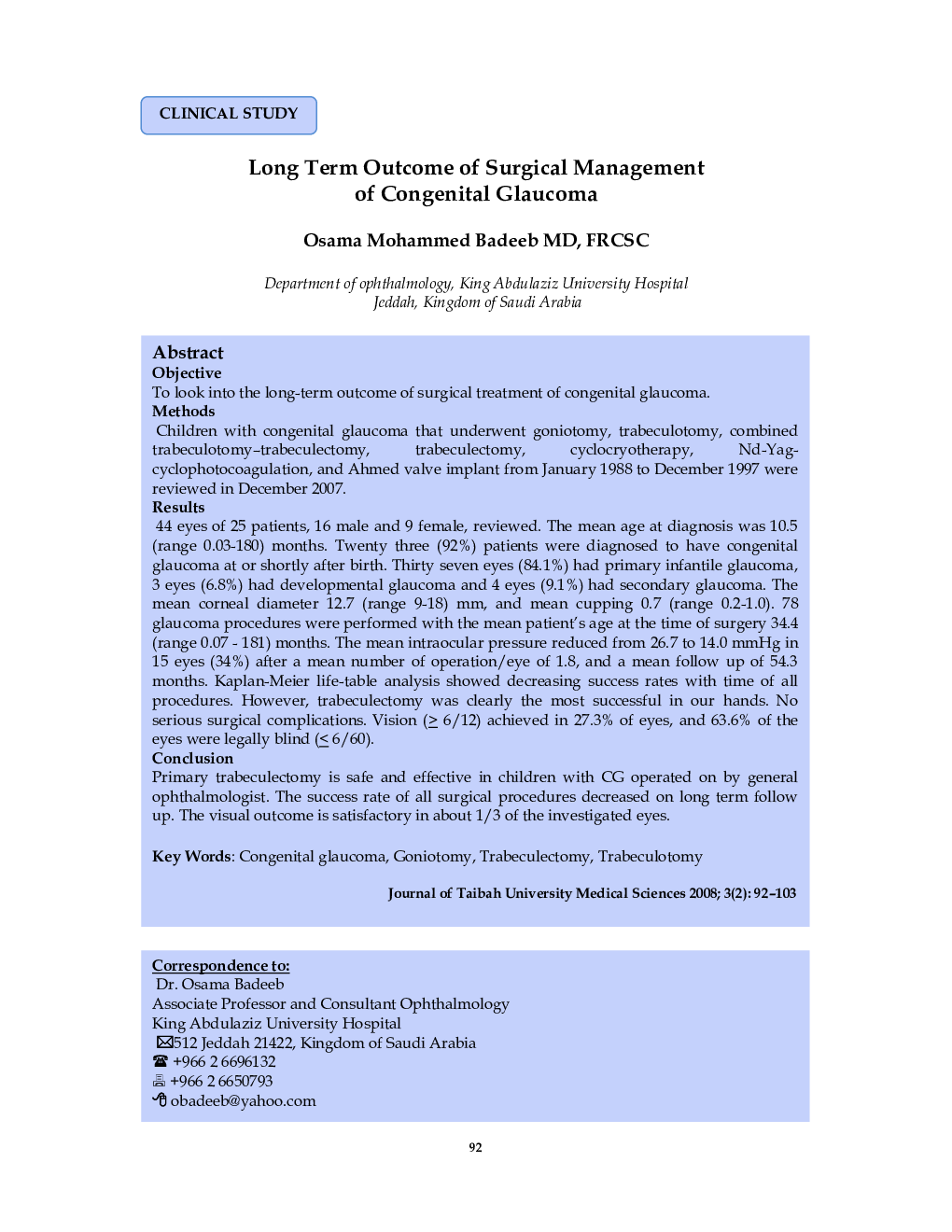| Article ID | Journal | Published Year | Pages | File Type |
|---|---|---|---|---|
| 3484723 | Journal of Taibah University Medical Sciences | 2008 | 12 Pages |
ObjectiveTo look into the long-term outcome of surgical treatment of congenital glaucoma.MethodsChildren with congenital glaucoma that underwent goniotomy, trabeculotomy, combined trabeculotomy–trabeculectomy, trabeculectomy, cyclocryotherapy, Nd-Yag-cyclophotocoagulation, and Ahmed valve implant from January 1988 to December 1997 were reviewed in December 2007.Results44 eyes of 25 patients, 16 male and 9 female, reviewed. The mean age at diagnosis was 10.5 (range 0.03–180) months. Twenty three (92%) patients were diagnosed to have congenital glaucoma at or shortly after birth. Thirty seven eyes (84.1%) had primary infantile glaucoma, 3 eyes (6.8%) had developmental glaucoma and 4 eyes (9.1%) had secondary glaucoma. The mean corneal diameter 12.7 (range 9–18) mm, and mean cupping 0.7 (range 0.2–1.0). 78 glaucoma procedures were performed with the mean patient's age at the time of surgery 34.4 (range 0.07 - 181) months. The mean intraocular pressure reduced from 26.7 to 14.0 mmHg in 15 eyes (34%) after a mean number of operation/eye of 1.8, and a mean follow up of 54.3 months. Kaplan-Meier life-table analysis showed decreasing success rates with time of all procedures. However, trabeculectomy was clearly the most successful in our hands. No serious surgical complications. Vision (≥ 6/12) achieved in 27.3% of eyes, and 63.6% of the eyes were legally blind (≤ 6/60).ConclusionPrimary trabeculectomy is safe and effective in children with CG operated on by general ophthalmologist. The success rate of all surgical procedures decreased on long term follow up. The visual outcome is satisfactory in about 1/3 of the investigated eyes.
